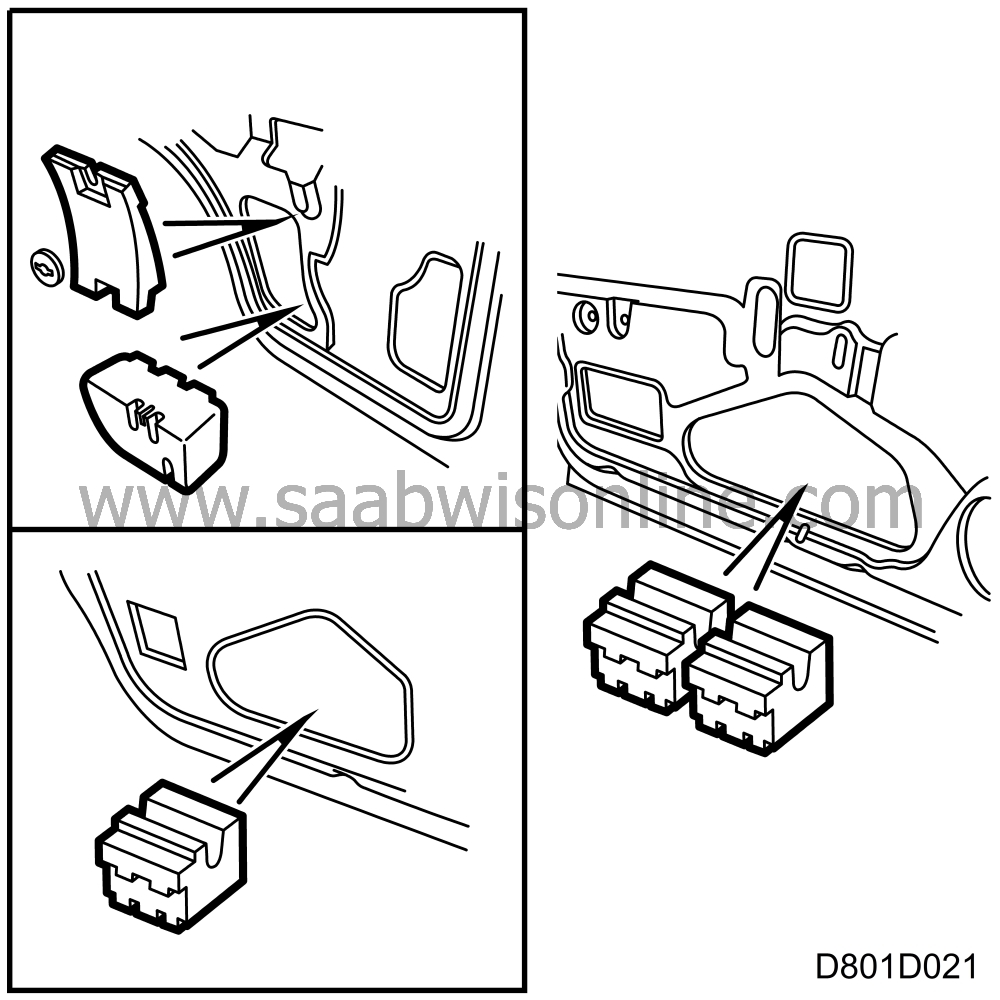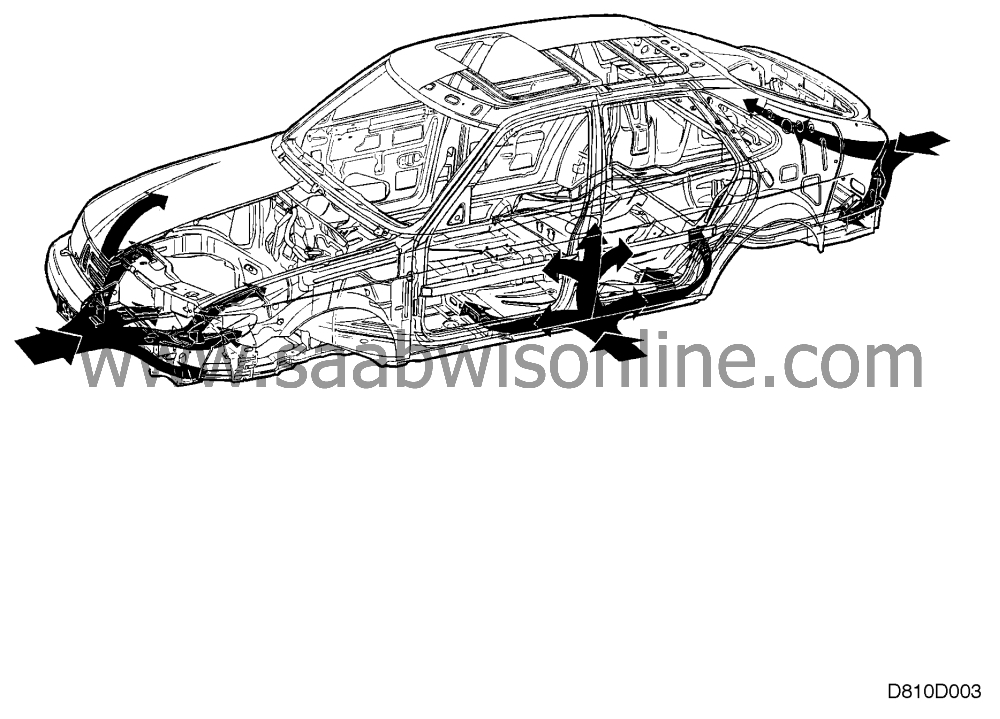Safety
| Safety |
The Saab 900 body is constructed to create a survival space for the car driver and passengers in the event of an accident. The basic idea is that the force in a collision will be slowed down by the deformation zones in the body and be distributed into the cockpit member system so that the load will be distributed as evenly as possible.
The generous deformation zones at front and rear are designed to give way progressively. They undergo more and more deformation as the forces exerted on them increase, without sheet metal tearing and penetrating the cabin. In a collision from the side, the door beams and sill absorb the forces that arise and distribute them through the floor cross-members and B pillar to the rest of the car body.
It is extremely important to ensure that there is no change in the efficiency of the energy-absorbing deformation zones and stable cabin enclosure after repairs. The cabin enclosure must never be weaker after repairs. However, the deformation zones must neither be made stronger than they were before any damage occurred. An excessively strong front or rear body section will propagate the forces arising in a collision instead of slowing them down, with the result that the forces acting on the cabin enclosure will be much more powerful.
| Important | ||
|
In order for Saab Automobile to be able to accept responsibility and guarantee that the car will have the same high standard of passive safety after a repair as it did before, it is extremely important that the work is done using only the correct methods and correct materials. |
||
| Supplementary side collision protection in doors |

The Saab 900 is equipped with supplementary side impact protection in the doors. The rear doors have protection in both the upper and the lower part. The upper protection is fitted in the door with two plastic clips. The protection is in the form of plastic foam spacers.
| Important | ||
|
Always refit the plastic foam spacers in the doors if they have been removed. This is extremely important to maintain the safety demands on the car in case of a side collision. |
||



